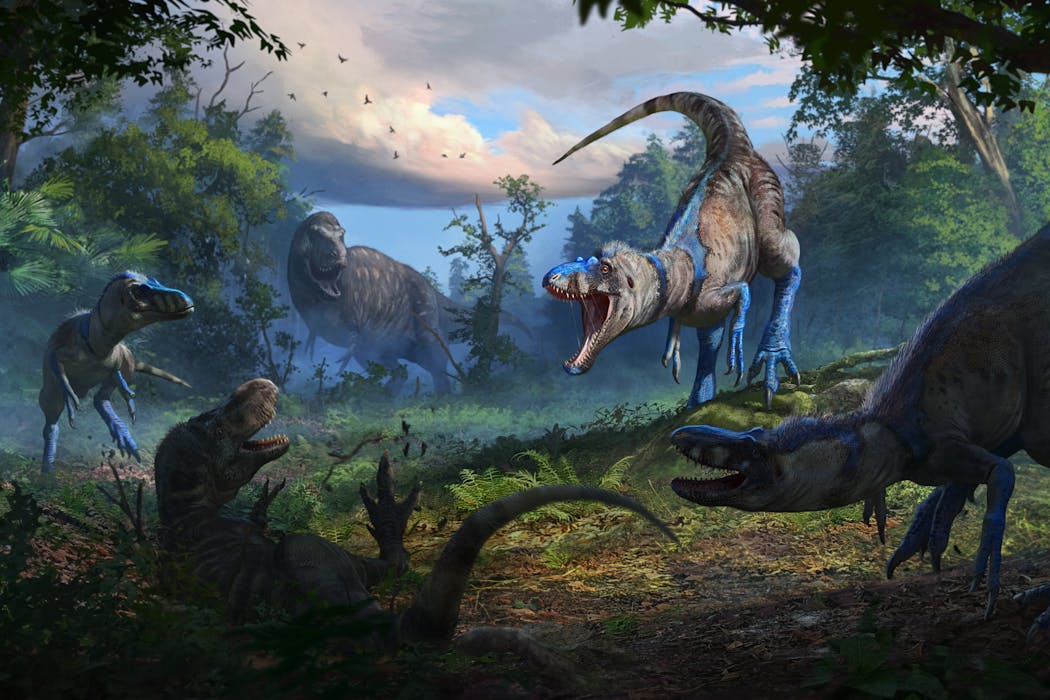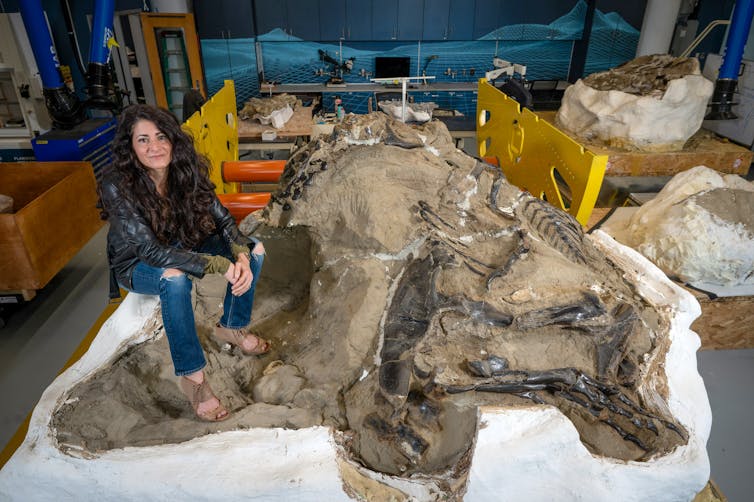Source: ForeignAffairs4
Source: The Conversation – UK – By Abi Crane, Postgraduate Researcher in Palaeontology, University of Southampton

A new specimen of one of the most controversial species of dinosaur has the
potential to overturn decades of research on the T rex.
Nanotyrannus, the “miniature T rex”, has been the centre of one of the fiercest debates in palaeontology. Scientists have long argued over whether the Nanotyrannus is a separate species or just a young T rex.
The controversy was ignited in 1999 when the only known fossil of a Nanotyrannus was found to belong to a juvenile. More complete fossils have since failed to produce any conclusive answers because they were all also found to be juvenile.
Read more:
Five things you probably have wrong about the T rex
But the debate surrounding the identity of Nanotyrannus may finally be settled. A new fossil specimen, described in the journal Nature, is the smoking gun researchers have been looking for: an adult Nanotyrannus.

N.C. State University, CC BY-NC-ND
Known as the duelling dinosaurs, this fossil preserves an almost-complete
Nanotyrannus and Triceratops entombed together. They seem frozen in combat (whether they were actually fighting when they became buried in the Earth’s sediment remains to be tested). Although the fossil was discovered in Montana, US back in 2006, it was under private ownership until the North Carolina Museum of Natural Sciences purchased it in 2020. Now accessible to scientists, the true nature of this remarkable fossil can be revealed for the first time.
The researchers have confirmed that Nanotyrannus is a separate miniature type of tyrannosaur by demonstrating this specimen belonged to a near fully-grown adult. The age and maturity of dinosaurs can be assessed by looking at the inside of their bones. Dinosaurs grew in cycles of faster and slower growth which produced distinct layers of bone. When cut open and examined under a microscope, these marks can be counted like rings in a tree.
Using this method, the researchers could determine that the Nanotyrannus in the duelling dinosaurs was at least 14 years old when it died. The researchers also found its rate of growth had slowed significantly in its final years, indicating that this individual was nearly at full body size.
So just how small was this miniature T rex? Nanotyrannus is only around one tenth of the size of a fully grown T rex. Being one of the largest predators to ever walk the Earth, however, T rex would make most animals look small. The duelling dinosaurs Nanotyrannus is over four metres long and estimated to have weighed over 700kg – that’s as heavy as some of the very largest polar bears.
Other specimens of Nanotyrannus are even bigger. The almost complete skeleton known as Jane, discovered in 2001 also in Montana, is estimated at over a ton, larger than any land predator alive today.

N.C. Museum of Natural Sciences, CC BY-NC-ND
The researchers have found enough differences in the shape of bones in the skulls of the duelling dinosaurs fossil and the larger Jane to separate them into two different species; Nanotyrannus lancensis and the newly-named Nanotyrannus lethaeus.
Other than small size, another feature that the researchers have used to distinguish Nanotyrannus from T rex is the number of teeth. Despite its much smaller mouth, Nanotyrannus could no doubt pack a powerful bite with its over 60 teeth. T rex had 40-50 teeth in its jaws.
The teeth themselves are also different. Nicknamed “lethal bananas”, the teeth of T rex are curved and serrated like steak knives. These unique teeth are perfect for slicing into flesh and could crush bone. By contrast, some of the teeth of Nanotyrannus are straight, chisel-like and without serrations, more closely resembling those of other types of carnivorous dinosaur.
T rex had famously tiny arms, the source of many jokes and dinosaur impressions. Nanotyrannus does not
– ref. New ‘miniature T rex’ rewrites the history of the world’s largest predator – https://theconversation.com/new-miniature-t-rex-rewrites-the-history-of-the-worlds-largest-predator-268678
